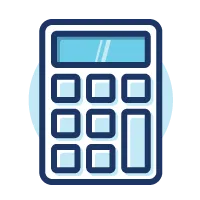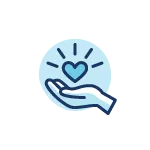Managing medical debt can have a major impact on your household. For many people, medical bills are all too common. One medical bill can easily cause you to fall behind on your other bills. Financing health costs can be challenging, but there are ways to manage medical debt, regardless of how much you owe.
According to the American Medical Association, about 28 million people in the U.S. currently have medical debt. Even insured Americans can have debt from health care. Many have insurance, but not enough to cover a medical emergency or major health challenge.
Managing medical debt is one of the leading causes of financial hardship. It can also be a major factor in some people’s inability to pay for health care in the future. The Census Bureau found that 19-percent of households could not afford to pay for unexpected medical care.
When someone is facing a health issue, the cost is rarely in the front of their minds. They just want to feel better, as quickly as possible. However, you may eventually receive a bill for whatever procedure or treatment you receive.
1. Take Inventory
As a first step, it is always a good idea to fully understand where you currently stand financially. What exactly do you owe? In the same way that you cannot ignore personal debts, thinking they will magically go away, you have to face your medical debt head-on.
2. Understand Your Insurance Coverage
Make sure you understand what your insurance does cover and what it doesn’t. You can ask your insurer before having a procedure or test done. If you need to have something done that isn’t covered, ask about alternative tests or treatments that might be covered. Understanding your options ahead of time can help reduce your out-of-pocket costs. Most health systems have finance departments that may be able to work out a payment plan for you.
3. Get Help, When You Need It
Understanding how to manage expenses like medical costs and loans starts with a conversation. GreenPath financial counselors are available to talk. They can help you figure out a plan and will walk through your complete financial picture to help you understand the best way to manage your debt. It’s likely medical debt is only one part of your financial situation. Trusted counselors take the time to explore how other debt, such as credit cards, housing costs and other financial obligations impact your ability to manage medical debt.
4. Be Proactive With Your Health and Your Medical Bills
The best way to avoid medical debt is to do everything you can to take care of yourself. It’s easier to stay healthy than get healthy. Unexpected emergencies can happen. When they do and you incur a debt, remain proactive about what you owe.
5. Verify You Owe the Debt
It is always a good idea to verify that the medical debt is correct. Sometimes, mistakes are made in medical billing. If you find an error, act quickly to resolve or dispute the charges. Verify the amount insurance is covering is correct and pay the bill as soon as you can or negotiate repayment, if you need to. Delaying payment could send the bill to collections, which can negatively affect your credit scores. If you find you don’t owe the bill or the amount is incorrect, dispute it.
6. Don’t Avoid Your Creditors
Collection calls can sometimes be annoying, but resist ignoring them. Not addressing a medical debt can hurt your credit score for a long time.
If you can’t afford to pay off all your debt and hesitate to contact your creditors directly, you can contact a trusted resource like GreenPath.
Medical debt can have a big impact on your budget. The interest rate on medical debt is generally high. This is because people with medical debt are often already facing financial challenges. No matter how big a medical bill might be, remember it is not the end of the world. Take those calls from the creditors and work out a plan to repay your debt.
7. Make Yourself a Priority and Keep a Positive Mindset
In the Her Money blog, Sophia Surret reminds those facing medical debt that,
… the most important thing to keep in mind is that the treatments and procedures you had done were needed to save your life, or improve your health. The most important thing is your recovery. Once you’re feeling better, try paying your bill down over time, being careful not to put more than 3% to 6% of your total income towards your hospital bills. You’re doing your best, you’re healing, and that’s all that matters.”
Next Steps to Manage Your Medical Debt
A medical challenge can be overwhelming by itself, let alone a major debt that follows. Do everything you can to manage your personal finances, including medical debt. If you need help, GreenPath is here.
APR = Annual Percentage Rate











